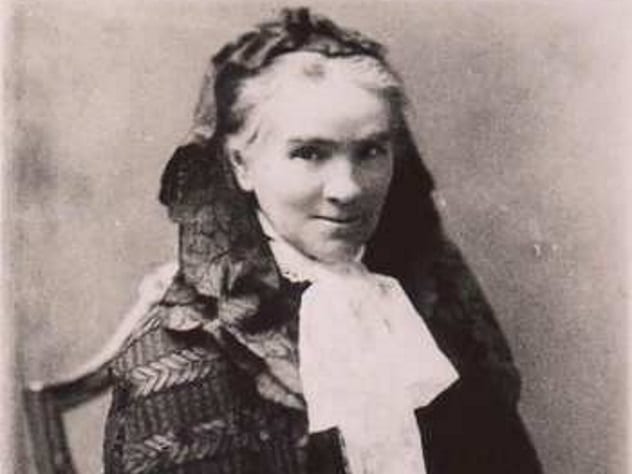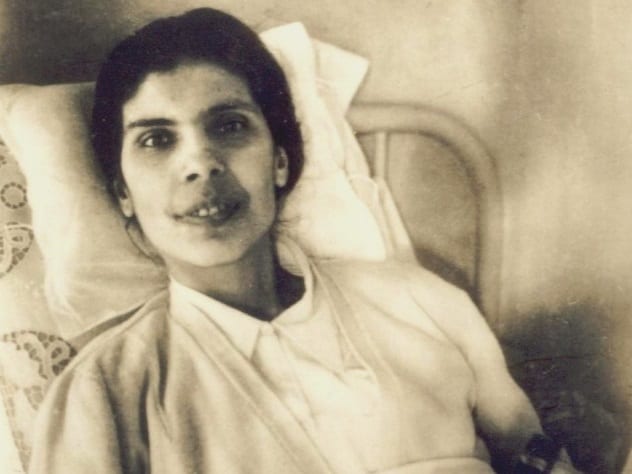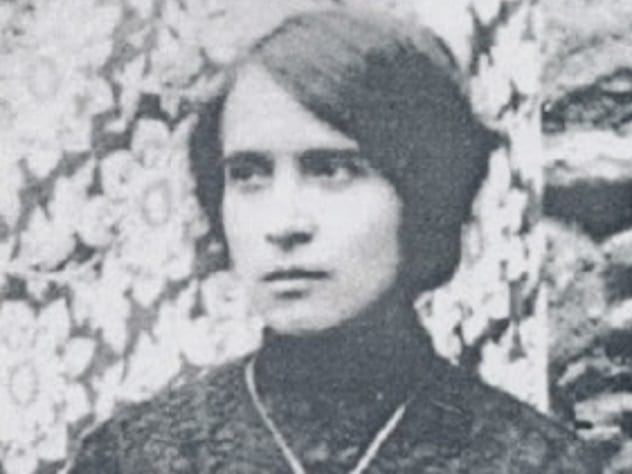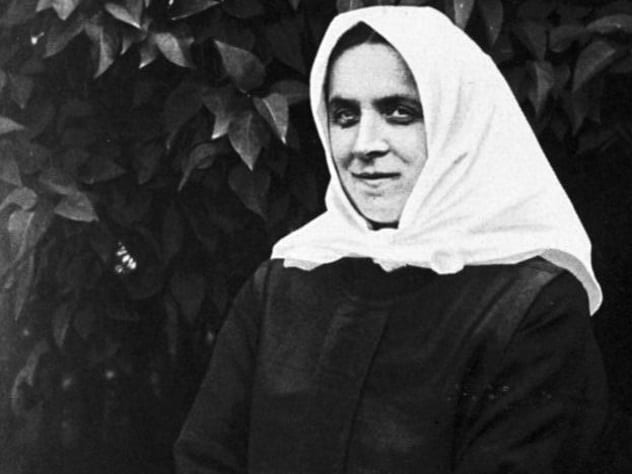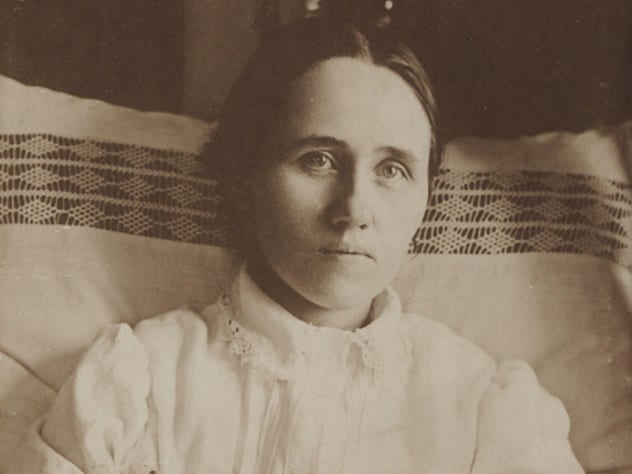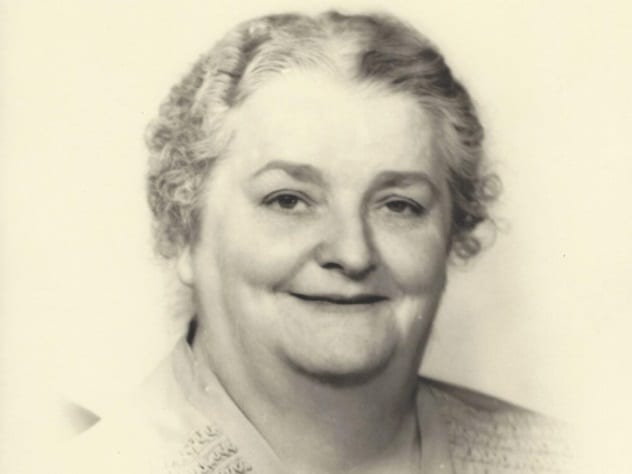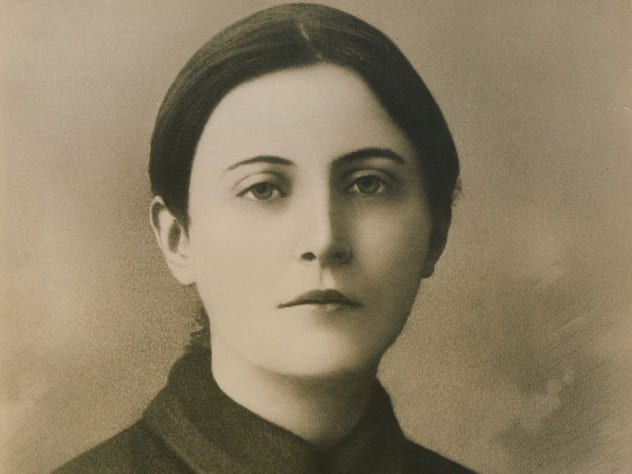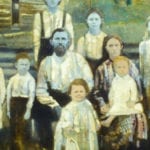Almost all stigmatics are women, notable exceptions being, of course, Saint Francis and Saint Pio of Pietrelcina, who was canonized in 2002. They are usually Catholic and may display all or only some of the wounds said to have been inflicted on the cross. Some have even claimed to have lived for years without any form of sustenance except communion wafers. Almost all stigmatics also receive visions of Heaven or, disturbingly, Hell or converse with angelic messengers. While there are a number of medical conditions which may explain some aspects of the phenomenon—such as schizophrenia and haemathidrosis, which can cause a person to sweat blood—there is no explanation that covers all of the symptoms, except, perhaps, fraud. Or a miracle.[1]
10 Teresa Helena Higginson
Teresa Higginson was born in North Wales in 1844 to a deeply religious family. One of nine children, she was always a peculiar child. She was said only to have committed a single sin: At the age of four, she did not hang up her hat when her mother asked her to. Despite her suspicious lack of sin, she spent much of her childhood doing penance. Rather surprisingly, she chose not to become a nun but rather a teacher. She went to Liverpool after a smallpox and cholera epidemic and began to teach. She began to experience ecstasies—periods of apparent “absence”—and seemed to eat rarely, existing for days on a single communion wafer. In 1874, just before Easter, she developed wounds on her hands and feet and thorn marks on her head, which she believed was a preparation for her “mystical espousal” with Christ. The Devil was said to have visited her often during the night, and her family would be awakened by violent crashing noises and shrieks from her room. She continued to receive visions and marks of the stigmata for the rest of her life. Teresa passed away in 1905. Though an appeal was made to the Vatican to have Teresa Higginson made a saint, to date, this has not happened. The reason is said to have been because of her insistence that the faithful should venerate the Sacred Head of Jesus, which the Church worried might start a fad for the worship of various parts of His anatomy.[2]
9 Alexandrina Da Costa
In 1918, Alexandrina da Costa, or Blessed Alexandrina of Balazar as she is also known, was 14 years old when three men broke into her home in Portugal to rape her. She jumped out of a window, 4 meters (13 ft) off the ground. Having escaped with her modesty intact, she then picked up a piece of wood and went back into the house to defend the honor of her sister and her friend, and the men fled. Though she had “defended her purity,” she was said to have suffered irreversible injuries during the fall. By the time she was 19, she was paralyzed, and she was bedridden for the rest of her life after age 20. After first praying for a cure, she is said to have believed that suffering was her “vocation.”[3] One night, after a priest had celebrated Mass in her room, she had a vision of Christ on the cross. In 1934, just to make things that bit harder, she also developed the stigmata and, at the same time, began having visions of Hell and hearing voices telling her to kill herself. From Easter 1942 forward, she began to eat only communion wafers and, despite this, lived for another 13 years. She was beatified in 2004.
8 Saint Mariam Baouardy
Saint Mariam Baouardy’s very birth was said to have been a miracle. Her parents had 12 sons, all of whom had died in infancy. So they made a pilgrimage to Bethlehem, on foot, and prayed for a daughter. They promised that if their prayers were granted, they would name her Mariam and would give the Church a quantity of wax equal to the weight of the child on her third birthday. Just to be extra safe, they had the child baptized, confirmed, and given her first communion, all within ten days of her birth.[4] But God can be sneaky. Though the child survived, both parents died within two days of each other, before the three years were up. St. Mariam had her first vision as a young child, just after she had accidentally drowned her pet birds. She refused an arranged marriage and was later attacked and stabbed in the throat. She was found by “a nun dressed in blue” who stitched her wounds in “a grotto,” whereupon she had a vision of Heaven. The strange nun told her to join the Carmellite sisters, which St. Mariam then did. When St. Mariam was 20, she developed the stigmata. From Wednesday evening to Friday morning each week, she had the marks of all five wounds, which would then heal. She continued to have visions, both of Heaven and of Hell. She was said to have levitated during some of them, even up to the top of a tree. St. Mariam died in 1878, at the age of 31. She was canonized in 2015 by Pope Francis.
7 Edvige Carboni
Edvige Carboni was born in Sardinia in 1880, whereupon she was said to have received a “supernatural branding” of the cross over her heart, which may or may not have been a cross-shaped birthmark. Though she wanted to be a nun, her mother forbade it, so she joined a lay order instead. She was said to have had visions of numerous saints before receiving the stigmata. She had an encounter with a demon in 1941, after which she was regularly visited by the Devil, who attacked her, causing injuries which confined her to her bed. She was even said to have had visions of Saint Pio, the celebrated stigmatic who, at that time, was still alive. She was said to have achieved bilocation, the ability to be in two places at once, though there is little recorded regarding what she did with this remarkable ability. Carboni died in 1952, and the long process to canonization began within a few years of her death. She was named Venerable by Pope Francis in 2017. A miracle was attributed to her in 2018, and she is due to be beatified later this year.[5]
6 Mariam Thresia Chiramel
Mariam Thresia Chiramel was born in India in 1876 and experienced visions from a young age, which concerned her bishop so much that, on his authority, she underwent a series of exorcisms which lasted three years. Her visions contained disturbing images of Hell in which she was constantly tempted by a stream of demons. Despite the bishop’s reservations, Mariam went on to form her own order in 1914. From 1909 onward, she was observed to have signs of the stigmata and claimed to be regularly attacked by demons. She died in 1926 and is due to be canonized this year.[6]
5 Magdalena De La Cruz
Magdalena de la Cruz was, for many years, regarded as a living saint. Born in 1487, she had the stigmata from a young age and was believed to be in constant communication with God. She had a number of prominent devotees, including the head of the Franciscan order at that time and members of Spain’s royal family. At the age of ten, she attempted to crucify herself. She managed to nail her feet and one hand and then realized the flaw in her plan. She began to bleed and fainted from the pain, tearing free from the wall and cracking two of her ribs as she fell. She was said to have been miraculously healed on Easter Sunday 1497. When a future king was born in 1527, he was sent Magdalena de la Cruz’s habit so that he could be wrapped in it and thus shielded from the Devil. She was said to have received visions, made prophecies, and even performed miracles, including making the blind see and the lame walk. Magdalena claimed that she had been visited by the Holy Spirit and made pregnant. The Archbishop ordered that she be examined by midwives, who declared that she was both pregnant and “chaste.” She was said to have given birth to a baby who “radiated light.” Midwives again examined her and declared that, despite having given birth naturally, she was still a virgin. That is a neat trick.[7] However, there was one person who did not believe in de la Cruz. Saint Ignatius Loyola was not convinced. In fairness, there were a few telltale signs. As abbess, Magdalena imposed strict and often bizarre and degrading penances on her sister nuns. She claimed to have received a vision which absolved her, alone of all Catholics, from having to go to confession, while at the same time investing her with the authority to hear confessions from others. Eventually, and with the persuasion of the Spanish Inquisition, Magdalena de la Cruz admitted that she was a fraud. Instead of being a living saint, she had made a pact with the Devil and been visited by demons, with whom she had copulated for 40 years. As a penance, she was exorcised and then led, bound and gagged, to the scaffold, with a rope around her neck and a candle in her hand. She remained there for the duration of a High Mass (a pretty long time), after which she was taken down again to spend the rest of her life in a convent.
4 Therese Neumann
Therese Neumann was one of the most famous stigmatics in the world. Born in Germany in 1898, she became partially paralyzed when she was a young woman and also lost her sight. In 1923, Neumann began saying novenas to Saint Therese of Lisieux, and on the day the latter was beatified in Rome, Neumann’s eyesight was restored. When St. Therese was canonized two years later, Neumann’s paralysis was cured, too (as were her bed sores, which was less dramatic but presumably just as welcome). During Lent in 1926, Therese Neumann developed the stigmata. She claimed that she had experienced a vision of the crucifixion and had wounds in her hands and feet as well as blood pouring from her eyes. In 1928, her stigmata claims were examined by a group of doctors and bishops. They found her behavior suspicious, as the blood would only appear just after they had left the room. Neumann claimed that for 40 years, until her death, she ate no food other than the communion wafers and drank nothing but water. She was examined by a doctor and four nurses, who watched over her for 15 days. They did not see her eating but again found suspicious circumstances. She had been weighed beforehand, and her weight dropped by 4.5 kilograms (10 lb) during the period of observation before returning to its previous levels. Moreover, she was said to have had a “stocky build.” Despite some doubts as to the authenticity of her “gifts,” in 2005, Therese Neumann was declared a Servant of God, the first step on the road to canonization.[8]
3 Saint Anna Schaffer
Saint Anna Schaffer was born in 1882 in Germany and had her first vision six years later, when Christ told her that she was going to live a life filled with painful suffering. In 1901, she fell into a washing machine, and her legs were severely scalded. She was burned so badly that she required dozens of operations and constant care. However, her skin grafts would not take, and she became immobile. Despite this, she devoted herself to her religion, and in 1910, she began to show signs of the stigmata. She experienced visions, during which she conversed with St. Francis and Jesus. In 1925, as if she didn’t have enough on her plate, St. Anna developed colon cancer, and she prayed that she would be granted “agonizing martyrdom” to become a “little victim of reparation.” She was said to have lost the ability to speak, but after receiving communion the day she died, she called out, “Jesus for you I live!” and expired.[9] She was canonized in 2012 by Pope Benedict XVI.
2 Rhoda Wise
Born in 1888 in Ohio, Rhoda Wise was an American stigmatic and would make an unlikely saint were she to be canonized. She was raised as a Protestant and was briefly married until her husband died of a brain hemorrhage just six months after the wedding. Then she married again and adopted two children. Her second husband was an alcoholic, and they were flat broke and living in a slum near the municipal dump. She developed a number of health problems and was briefly admitted to a mental hospital with postoperative psychosis in 1933. In 1936, while in the (regular) hospital, she was visited by nuns, and as a result, she converted to Catholicism. In 1939, she was diagnosed with terminal stomach cancer, after which she had visions of Jesus and St. Therese of Lisieux, who, it is claimed, cured her cancer and healed the wounds in her stomach.[10] From that time, she claimed to receive annual visits from St. Therese and Jesus each year on January 2. She began to show signs of the stigmata in 1942, and this continued for the next two years. During this time, she claimed that her apparitions had asked her to pray for a number of causes, including the conversion of Russia, which, on the face of it, seems a big ask. Despite being ill for many years, she was visited by thousands of pilgrims, many of whom asked for and, it seems, received healing. In 2012, investigations by the Church began into Rhoda Wise’s life, and in 2016, she was declared a Servant of God.
1 Saint Gemma Galgani
Saint Gemma Galgani has been called the Daughter of the Passion because of her profound stigmata. Born in Italy in 1878, her first spiritual experience occurred when she developed spinal meningitis at the age of 16. She attributed her survival to the prayers she had made to the Sacred Heart. Her parents died when she was 18, and she was left to bring up her younger siblings. By the time she was 21, she began to show the signs of the stigmata and had experienced a number of visits from her guardian angel, Jesus, the Virgin Mary, and a host of other saints. She claimed to receive messages from them about future events. Her health declined, and when she was on the verge of death, her spiritual advisor instructed her to pray for the disappearance of the wounds. She did as she was told, the stigmata left her, and her health recovered. However, she was often found in a “state of ecstasy,” during which she was reputed to have levitated. Her doctor, who examined the stigmata, observed “hysterical behavior,” which, he believed, may have been the result of a neurosis. He observed spots of blood but no wounds. It is also claimed that a needle was once found on the floor next to her bed. It has been suggested that her stigmata was a form of hysteria brought on by the post-traumatic stress of her parents’ death. Or a miracle. St. Gemma developed tuberculosis in 1903. By the time Lent arrived, she was suffering not only from the respiratory disease but also from the pains of the crucifixion. She was said to have suffered agonies on Good Friday, before finally expiring on Holy Saturday.[11] She was canonized in 1940, and her heart can be found, along with other relics, in a monastery in Madrid, Spain.
